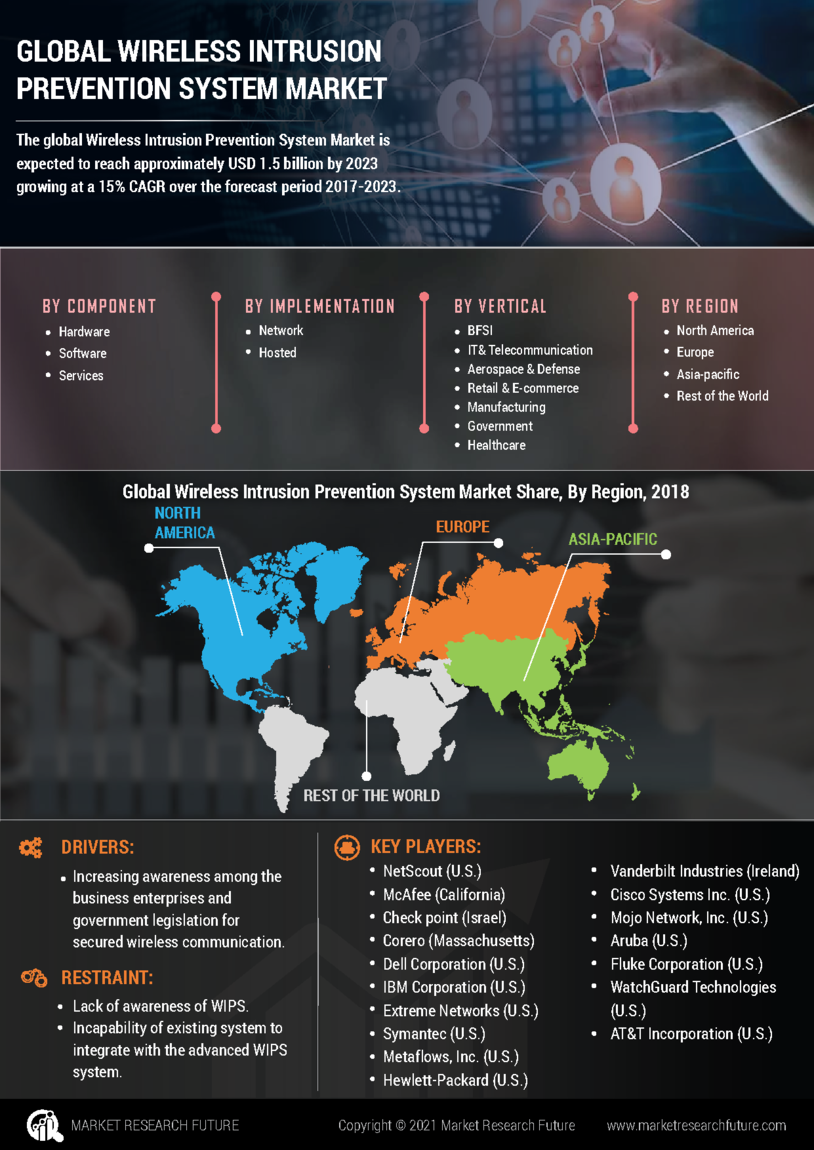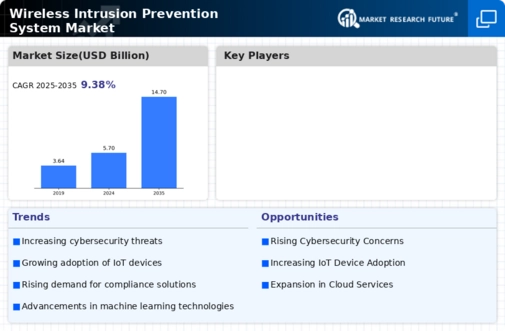Market Growth Projections
The Global Wireless Intrusion Prevention System Market Industry is projected to experience substantial growth over the coming years. With a market value of 5.7 USD Billion in 2024, it is expected to reach 14.7 USD Billion by 2035. This growth trajectory indicates a robust demand for wireless intrusion prevention systems, driven by factors such as increasing cyber threats, regulatory compliance, and technological advancements. The anticipated CAGR of 8.96% from 2025 to 2035 further underscores the market's potential for expansion. As organizations continue to prioritize cybersecurity, the market is likely to evolve, adapting to emerging challenges and opportunities.
Rising Cybersecurity Threats
The increasing frequency and sophistication of cyber threats is a primary driver for the Global Wireless Intrusion Prevention System Market Industry. Organizations are increasingly targeted by malicious actors seeking to exploit vulnerabilities in wireless networks. In 2024, the market is projected to reach 5.7 USD Billion, reflecting a heightened awareness of security needs. As cyberattacks evolve, the demand for advanced intrusion prevention systems that can detect and mitigate threats in real-time is likely to grow. This trend underscores the necessity for businesses to invest in robust security measures to protect sensitive data and maintain operational integrity.
Growing Adoption of IoT Devices
The proliferation of Internet of Things (IoT) devices is driving the demand for wireless intrusion prevention systems within the Global Wireless Intrusion Prevention System Market Industry. As more devices connect to networks, the potential attack surface for cybercriminals expands, necessitating robust security measures. Organizations are compelled to implement intrusion prevention systems to protect their networks from unauthorized access and data breaches. This trend is expected to accelerate market growth, as businesses recognize the importance of securing their IoT ecosystems. Consequently, the market is projected to witness substantial growth, aligning with the broader trend of digital transformation across industries.
Regulatory Compliance Requirements
Stringent regulatory frameworks governing data protection and privacy are propelling the Global Wireless Intrusion Prevention System Market Industry. Organizations are mandated to comply with various regulations, such as GDPR and HIPAA, which necessitate the implementation of effective security measures. Failure to comply can result in substantial fines and reputational damage. As a result, businesses are increasingly adopting wireless intrusion prevention systems to ensure compliance and safeguard sensitive information. This trend is expected to contribute to the market's growth, with projections indicating a rise to 14.7 USD Billion by 2035, as organizations prioritize compliance-driven security investments.
Increased Awareness of Wireless Security
There is a growing awareness among organizations regarding the importance of wireless security, which is significantly impacting the Global Wireless Intrusion Prevention System Market Industry. As businesses recognize the vulnerabilities associated with wireless networks, they are increasingly investing in intrusion prevention systems to safeguard their assets. This heightened awareness is driven by high-profile data breaches and the potential consequences of inadequate security measures. As a result, the market is poised for growth, with organizations prioritizing investments in wireless security solutions to mitigate risks and enhance their overall security posture.
Technological Advancements in Security Solutions
Rapid advancements in technology are significantly influencing the Global Wireless Intrusion Prevention System Market Industry. Innovations such as artificial intelligence and machine learning are enhancing the capabilities of intrusion prevention systems, enabling them to identify and respond to threats more effectively. These technologies facilitate real-time monitoring and automated responses, which are crucial in today's fast-paced digital landscape. As organizations seek to leverage these advancements, the market is anticipated to expand at a CAGR of 8.96% from 2025 to 2035. This growth reflects the increasing reliance on sophisticated security solutions to combat evolving cyber threats.











Leave a Comment